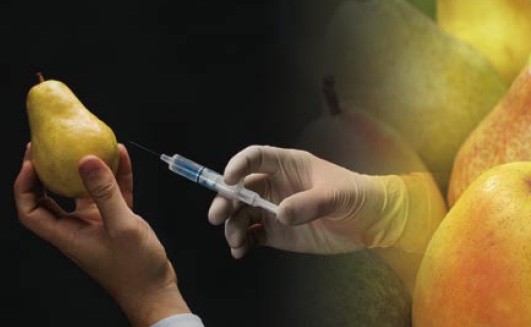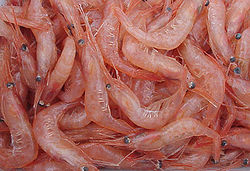
According to the Helmut Kaiser Consultancy, the nanofood market has increased from a value of USD2.6 bn in 2003 to USD5.3 bn in 2005; and it is expected to soar to USD20.4 bn in 2015. This trend is a clear indication that nanotechnology will progress within the food & drink industry, and all companies, should they wish not to lose out, need to stay on top of this dynamic development.
Indeed “nanotechnologies” is probably more of a correct term to use these days, as there are such a wide span of different nano technologies and applications. “Nano-technologies” is crossing many technology boundaries as the scientists from disciplines such as chemistry, physics and other pure sciences to medical, materials, sensors and food to name a few, interact to link their researches together. Developments in the food and drink areas are at a at very early stage and are currently being shaped by progress in other areas, most specifically the pharmaceutical industry. Currently the main uses for nanotechnologies in food & drink applications are in packaging and in the
health/nutraceutical supplements areas, and it is expected that the use of nanotechnologies will not only increase within these two areas in the immediate future, but will also expand into other areas, such as ingredient functionality, emulsions and sensors.
Examples in packaging
An example for the packaging industry is the use of nano-silver. Because of its antimicrobial properties, nano-silver has been used to coat packaging materials and inner surfaces of fridges and dishwashers, as well as being incorporated into plastic food containers. Another example is the use of nanoclays, which can be incorporated into plastic bottles for drinks – preventing oxygen from migrating through the plastic bottle walls and destabilising the drink and therefore extending the product shelf life.
With respect to the health supplement areas, the use of nano-sized droplets has been found to increase the efficacy of certain nutraceuticals or health agents. These are generally prepared either by emulsion technology or by micelle encapsulation technology. For example, the antiinflammatory properties of curcumin were found to be enhanced if the emulsion droplet size was reduced below 100nm (Wang et al, 2008, Food Chemistry, Vol 108:
20). Nano-encapsulation is reported to improve solubility properties and enhance bioavailability, and an example is the Canola Active Oil, produced by Shemen Industries; this oil product contains nanocapsules or nanomicelles of phytosterols, which are thought to reduce the uptake of cholesterol from the digestive system.
Nanofoods
While the use and benefits of nanotechnologies is extolled in published research / academic papers, there has been some technology transfer into real food and drinks products. A database of all commercial products claiming to use nanotechnology can be found by accessing the website set up by the Project on Emerging Nano-technologies (“PEN”) organisation, which is based in the USA. Within the website -www.nanotechproject.org - there are six inventories, and one of these is specifically set up for the food & drink industry. A cooking oil and chocolate shake are some of the products listed. The chocolate slim shake is a dietary product, where silica nano-particles are
included that are coated with cocoa particles to give a creamy chocolate taste with reduced fat content.
The application of nanotechnologies to standard ingredients such as salt, fat and biopolymers to produce foods with improved properties should not pose any danger as it is thought that they will be broken down in the body in the usual way. This needs to be emphasised to the media and consumers, so that the development of new foods benefiting from nanotechnologies can proceed. Examples of inorganic nanoparticles that could be a risk include silver, titanium and silica, and the main concern is that these are not normally eaten and metabolised. Thus, it is certainly sensible for the food & drink industry to look at the use and safety of these inorganic nanoparticles. The use
of silica nanoparticles as centres for diet products, such as the commercial Chocolate SlimShake, has raised the question as to whether and how these products should be regulated.
Examples of products that contain nanoparticles resulting from the manufacturing processes include margarines, toffees, chocolate and cheese. For example, toffee is made up of fat droplets surrounded by a thin nanoscale protein membrane in a matrix of sugar containing milk protein. The stability of the interface is important, as it controls the fat droplet size and hence the sensory properties, such as texture and creaminess. Understanding how the
properties of foods change with size of the ingredients and then manufacturing foods with controlled size and structure, should allow improvements to properties that are of benefit to the consumer. In addition, this approach allows for development of healthier foods, which is of concern to the Western world where many suffer from obesity and related diseases, such as high blood pressure, diabetes and coronary heart disease. The use of nanotechnologies
can lead to the development of products that are lower in fat, sugar and salt, and can help overcome technical and sensory problems that food developers come across when using conventional methods. An example is the development of lower fat foods that taste as good as the higher fat products. Using technology to put nanosized water droplets inside fat droplets which are then inside a continuous water phase (a water in oil in water (WOW)
system) can produce mayonnaise that is much lower in fat but tastes as good as the high fat product. Figure 1 shows an image of a WOW emulsion under the microscope, where the fat is white and the water black.
Another example is the particle size reduction of salt crystals. There is a strong move from government agencies to lower the amount of salt in the consumer’s diet as the current intake is considered too high and dangerous for health. Studies at Leatherhead Food International have shown that the size of salt particles dominates the salt intensity and how quickly the salt is tasted. Smaller (micro-sized) salt particles were found to be tasted faster and with
higher intensity than standard sized table salt. This observation is due to the increase in surface area giving a change in properties. By using smaller, and potentially nano-sized, salt particles, the level of salt in products
such as crisps and snacks could be reduced, giving a healthier product.
 Chitosan is a linear polysaccharide with a composition of glucosamine (composed of randomly distributed β-(1-4)-linked D-glucosamine (deacetylated unit) and N-acetyl-D-glucosamine (acetylated unit)). Chitosan is widely used in commercial biomedical world. Chitosan is actually derived from the polysaccharide fibers of shellfish, shrimp, crabs and others. Chitosan has the capacity to bind lipids and fats. Most importantly, because chitosan is not digestible in its consumption, the chitosan itself does not contain calories. When drunk, chitosan attaches itself to the intestinal tract, and binds the fat that passes in the gut until absorbed by blood, because the fat that is not tied into the bloodstream, the fat is considered "can not be digested" by the body, so the fat will be excreted through digestive tract. Fibre needed as one who has played an important substance to clean the digestive tract, especially colon. Chitosan is a fiber that is useful to clean the intestines, stimulates the digestive process, and make healthy gut and helps reduce fat absorption.
Chitosan is a linear polysaccharide with a composition of glucosamine (composed of randomly distributed β-(1-4)-linked D-glucosamine (deacetylated unit) and N-acetyl-D-glucosamine (acetylated unit)). Chitosan is widely used in commercial biomedical world. Chitosan is actually derived from the polysaccharide fibers of shellfish, shrimp, crabs and others. Chitosan has the capacity to bind lipids and fats. Most importantly, because chitosan is not digestible in its consumption, the chitosan itself does not contain calories. When drunk, chitosan attaches itself to the intestinal tract, and binds the fat that passes in the gut until absorbed by blood, because the fat that is not tied into the bloodstream, the fat is considered "can not be digested" by the body, so the fat will be excreted through digestive tract. Fibre needed as one who has played an important substance to clean the digestive tract, especially colon. Chitosan is a fiber that is useful to clean the intestines, stimulates the digestive process, and make healthy gut and helps reduce fat absorption. Chitosan is produced commercially by deacetylation of chitin , which is the structural element in the exoskeleton of crustaceans (crabs, shrimp, etc.) and cell walls of fungi. The degree of deacetylation (%DD) can be determined by NMR spectroscopy, and the %DD in commercial chitosans is in the range 60-100 %.
Chitosan is produced commercially by deacetylation of chitin , which is the structural element in the exoskeleton of crustaceans (crabs, shrimp, etc.) and cell walls of fungi. The degree of deacetylation (%DD) can be determined by NMR spectroscopy, and the %DD in commercial chitosans is in the range 60-100 %.




